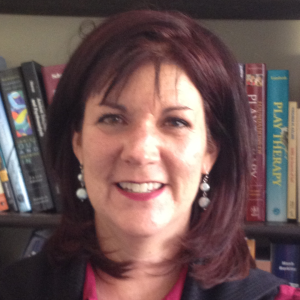As the Israel-Hamas war rages on, disturbing images and shocking news accounts have flashed across the world. Over the last few weeks, even people with no direct connection to the conflict have felt overwhelmed with confusion, anxiety and worries for the safety of those in the war zone—whether they’re friends, family or complete strangers.
But if adults are distressed, imagine how young people are feeling. Catching glimpses of violence online or on TV—including startling scenes of children in danger—kids, adolescents and even teenagers may struggle with their own questions. And they may not know how to find the answers.
In an interview with GW Today, Karen L. Weise, chair of the Child and Adolescent Track at the Columbian College of Arts and Sciences’ Professional Psychology Program, discussed strategies for helping young people express their fears and feel safe.
Q: How do you begin a conversation with young people on the Israel-Hama conflict? Should you discuss it if they don’t bring it up?
A: One of the key messages I want to get across is: Follow the lead of the child. If they explicitly ask a question—maybe their schools are speaking of the war or, if they’re a bit older, they’ve seen something on social media—then of course I would address it. But if you’re not really sure whether they are aware of what’s going on, I would tune into them more generally, as we often do as parents. Do they seem puzzled about something? Do they seem more stressed than usual?
So I don’t recommend that you just suddenly sit down and have a talk about it if you have no sense that it’s on their mind (especially with younger children). But if it seems like something is troubling them, it’s good to ask, “Hey, what’s going on? Are you all right? Is there anything you want to talk about?” From there, it’s important to keep the conversation at the developmental level of the child and let them take the lead by responding simply and directly to their questions.
Q: What kind of messages do young people need to hear from adults in times of crisis like this?
A: Mostly what [a young person] is asking for is reassurance that they’re safe and that everything’s going to be okay. Younger kids may personalize it, even though these events are happening far away. They may be thinking: “Am I going to be hurt? Is my family okay? Could it happen here?” Older kids, on the other hand, will often worry about the safety of kids overseas.
So I would be very, very reassuring about safety. You can comfort them by letting them know that they personally are safe. And while we often don’t know if everything is actually going to be okay in a conflict, we can reassure them that people all over the world are thinking about these things and figuring out how to keep kids [in the region] safe as best they can.
If there is actually some concern for their family or friends or even themselves—if they have experienced bias or prejudice or verbal aggression—then it’s a different conversation. Then they need to know that they should reach out to a trusted adult like a parent or teacher if they don’t feel safe.
Q: What can parents do about the disturbing or violent imagery that kids may be exposed to?
A: Of course, the younger the child, the less exposure they should have. It’s not always possible, but I would recommend doing your best to limit how much they see—especially for the little ones. It’s actually a good message for adults too. You can take a break from the coverage. Some of it is very, very disturbing and upsetting and confusing and worrying. If it’s that way for adults, then children are feeling it to the Nth degree.
But if you do know your child has seen things on the internet or television or the newspaper, I would recommend looking at it together to get a better sense of what they’re grappling with. When they’re watching TV or social media unsupervised, you don’t know what they have been exposed to or what’s going on in their heads. If you have a trusted news source that you can sit down and watch with them, it could be a way to answer some of their questions.
Q: Is there a way to turn this situation into a positive—like getting involved with community activities?
A: That’s a wonderful idea. There are charitable organizations that are helping out—whether or not they are affiliated with any of the communities either centrally or marginally being impacted. Some are making donations toward humanitarian aid that can increase the safety and care of children. Many local communities are having events and offering support and discussions. It’s something you can do as a family and, for a young person, it can be a way to contribute and feel like they are doing something to help kids who are in the middle of this crisis.



